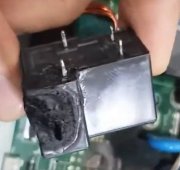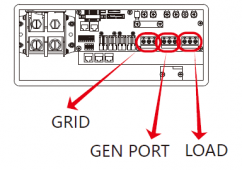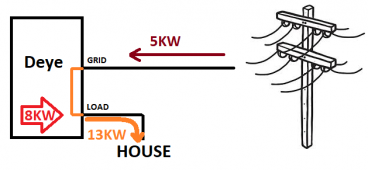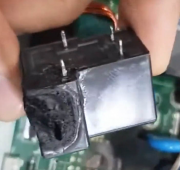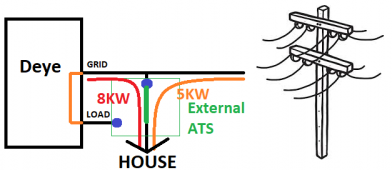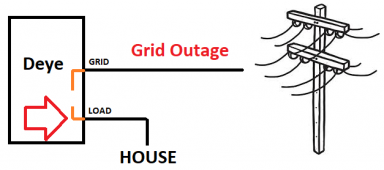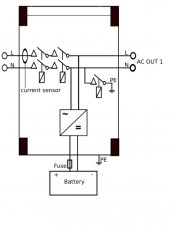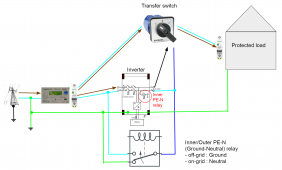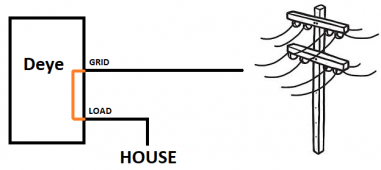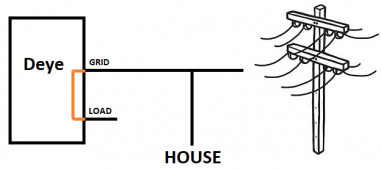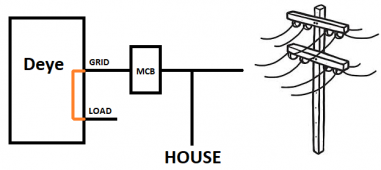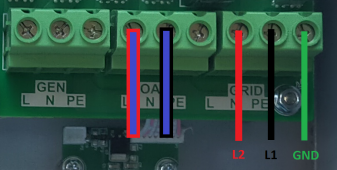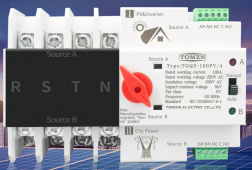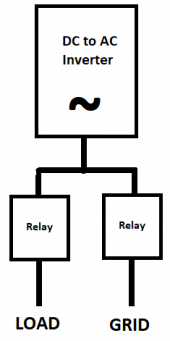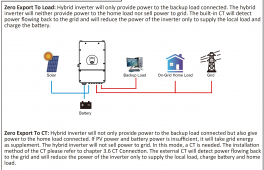Hmm... I am finding this very difficult to swallow.
OK let me understand how this goes:
GIVEN:
We will be using 8KW Deye unit, Single Phase
View attachment 107325
GRID, LOAD (all caps) refers to the physical terminals/ports above; it also refers to wires connected to it.
Grid/grid (not all caps) refers to utility company's power.
Load/load (not all caps) or house refers to the whole house and not just a few appliances.
Deye, House, Grid are wired such that House Occupants will have power even during grid outage but without using External ATS.
Now then:
When both Grid and Solar/Battery are available, internal relays (
represented in orange) will connect LOAD from GRID.
Deye will generate power to House through the LOAD terminal and will not use Power from Utility as shown below.
View attachment 107341
In this case, Deye operates similar to a GridTie.
I understand small current can still flow in and out to utility company.
Scenario 1: Morning, Utility Power is available
House occupants started the day regularly doing all kinds of chores: laundry (1KW), vacuum cleaning(2KW), hot shower bath(4KW), baking(3KW), making coffee(1KW), others (2KW). House is now drawing more than that what this Deye is rated. There will be a large amount of current flowing through the internal Relays.
View attachment 107354
Kinda, not safe dont you think?
This will lead to failure as shown by RCinFLA
View attachment 107357
But if the Deye inverter wont allow >8KW to pass through the LOAD terminal, then there is no reason to wire up the house this way.
If I have an external ATS and connect Deye as shown below, Deye will never exceed its rated capacity. Even if the occupants use the maximum power (16KW~65A), Deye will not be subjected to such large current flow internally.
View attachment 107365
Scenario 2: Grid Outage
During a Grid Outage, Deye will disconnect LOAD from GRID and powers the House from Battery.
View attachment 107329
Occupants understand Utility Power is out and use electricity conservatively.
Around 4AM, Battery runs out of power; Deye shuts down. Whole house is unpowered.
When Grid power resumes, Deye awakens and do the necessary steps to energize the House.
Should Solar becomes available first, Deye will first recharge Battery until Batt > Restart value. Then powers the house from Solar/Battery.
Everything is FINE.
I do understand that during a Grid Outage, Deye only has a limited battery power capacity and Occupants should use electricity conservatively.
But when Utility Power is available, Occupants understand that "it is normal power" and will use electricity liberally. Routing this much power through Deye is not healthy for the inverter and will cause parts failure.
I agree. So I will stick to using an external ATS.









